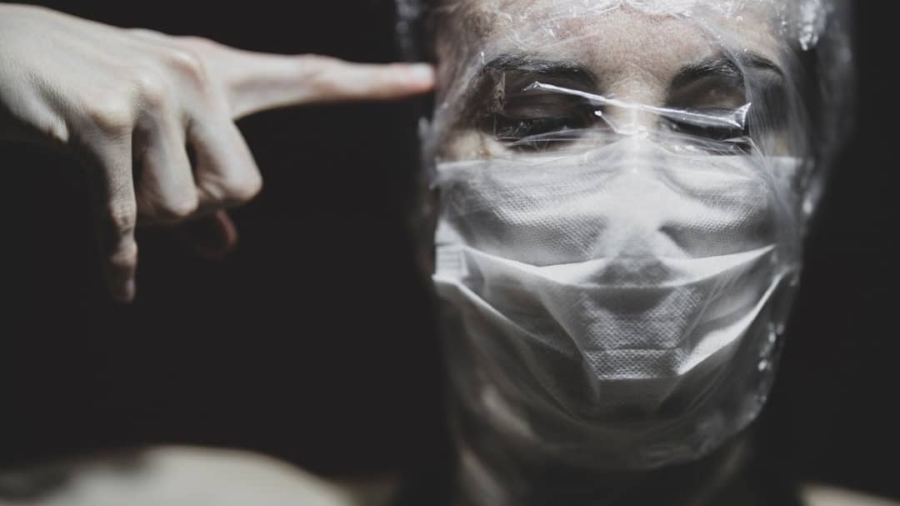Virtual Reality (VR) has emerged as a groundbreaking tool in the realm of mental health, particularly in the treatment of phobias. This innovative technology creates immersive environments that can simulate real-world scenarios, allowing patients to confront their fears in a controlled and safe setting. The integration of VR into therapeutic practices represents a significant shift from traditional methods, offering new avenues for treatment that were previously unimaginable.
As mental health professionals continue to explore the potential of VR, it is becoming increasingly clear that this technology can enhance the efficacy of phobia treatments, providing patients with a unique opportunity to engage with their fears in a manner that promotes healing and recovery. The use of VR in phobia treatments is not merely a trend; it is rooted in extensive research and clinical practice. By leveraging the power of immersive experiences, therapists can guide patients through exposure therapy in a way that feels both real and manageable.
This approach allows individuals to face their fears without the immediate risks associated with real-life exposure, making it an appealing option for those who may be hesitant to engage in traditional therapeutic methods. As we delve deeper into the mechanics of phobias and the various treatment modalities available, it becomes evident that VR is poised to revolutionize the landscape of mental health care.
Key Takeaways
- Virtual Reality (VR) is a cutting-edge technology that is being increasingly used in the treatment of phobias.
- Traditional treatment methods for phobias include cognitive-behavioral therapy, exposure therapy, and medication.
- VR in phobia treatments offers benefits such as controlled and safe exposure, customization, and real-time monitoring of patient progress.
- VR works by immersing patients in realistic simulations of their phobias, allowing them to confront and gradually overcome their fears in a controlled environment.
- VR plays a crucial role in desensitization and gradual exposure therapy by helping patients confront their phobias in a safe and controlled manner.
Understanding Phobias and Traditional Treatment Methods
Phobias are intense, irrational fears of specific objects, situations, or activities that can significantly impair an individual’s daily functioning. Common examples include arachnophobia (fear of spiders), acrophobia (fear of heights), and claustrophobia (fear of confined spaces). These fears often lead to avoidance behaviors, where individuals go to great lengths to steer clear of their triggers, ultimately limiting their quality of life.
The psychological mechanisms behind phobias can be complex, often rooted in past traumatic experiences or learned behaviors. Understanding these underlying factors is crucial for developing effective treatment strategies. Traditional treatment methods for phobias typically include cognitive-behavioral therapy (CBT) and exposure therapy.
CBT focuses on identifying and challenging negative thought patterns associated with the phobia, while exposure therapy gradually introduces patients to their fears in a controlled manner. While these methods have proven effective for many individuals, they can also be met with resistance due to the anxiety they provoke. Patients may struggle with the idea of confronting their fears directly, leading to incomplete treatment or relapse.
This is where VR offers a compelling alternative, providing a safe space for patients to engage with their phobias without the overwhelming anxiety that often accompanies traditional exposure techniques.
The Benefits of Using VR in Phobia Treatments

The incorporation of VR into phobia treatments presents numerous advantages that enhance the therapeutic experience. One of the most significant benefits is the ability to create highly customizable environments tailored to each patient’s specific fears. For instance, a patient with a fear of flying can be immersed in a virtual airplane setting, complete with realistic sounds and visuals that mimic the experience of air travel.
This level of customization allows therapists to design exposure scenarios that are both relevant and effective, increasing the likelihood of successful outcomes. Moreover, VR provides a safe and controlled environment for patients to confront their fears at their own pace. Unlike traditional exposure therapy, where patients may feel overwhelmed by real-life situations, VR allows for gradual exposure without the associated risks.
Patients can practice coping strategies and relaxation techniques within the virtual environment, building confidence as they progress through increasingly challenging scenarios. This sense of control can significantly reduce anxiety levels and foster a more positive therapeutic experience, ultimately leading to better treatment adherence and outcomes.
How VR Works in Exposing Patients to Their Phobias
The mechanics of VR in exposing patients to their phobias involve sophisticated technology that creates immersive experiences designed to simulate real-life situations. Using headsets and motion-tracking devices, patients are transported into virtual worlds where they can interact with their fears in a safe manner. For example, someone with a fear of heights might find themselves standing on a virtual ledge overlooking a vast canyon, while another individual with social anxiety could be placed in a crowded virtual room filled with avatars representing other people.
The effectiveness of this exposure hinges on the realism and interactivity of the virtual environment. Advanced graphics and sound design contribute to creating an authentic experience that can evoke genuine emotional responses from patients. As they navigate these scenarios, therapists can guide them through cognitive restructuring techniques, helping them reframe their thoughts about their fears.
This combination of exposure and cognitive intervention is what makes VR a powerful tool in phobia treatment, as it allows for simultaneous engagement with both emotional and cognitive aspects of fear.
The Role of VR in Desensitization and Gradual Exposure Therapy
Desensitization is a core principle in treating phobias, and VR plays a pivotal role in facilitating this process through gradual exposure therapy.
VR enhances this process by allowing therapists to create a hierarchy of fear-inducing scenarios that patients can experience sequentially.
For instance, a patient with a fear of public speaking might start by delivering a speech to a small group of virtual avatars before progressing to larger audiences or more challenging environments. This step-by-step approach enables patients to build resilience and coping skills as they confront their fears incrementally. The immersive nature of VR also helps reinforce learning by providing immediate feedback on their performance and emotional responses during each exposure session.
As patients become more comfortable within the virtual environment, they can transfer these skills to real-life situations, ultimately leading to reduced anxiety and improved functioning.
Case Studies and Success Stories of VR in Phobia Treatments

Numerous case studies highlight the effectiveness of VR in treating various phobias, showcasing its potential as a transformative therapeutic tool. One notable example involves a patient suffering from severe arachnophobia who underwent VR therapy as part of her treatment plan. Initially unable to even look at pictures of spiders without experiencing intense anxiety, she was gradually exposed to virtual spiders in increasingly realistic scenarios.
Over several sessions, her fear diminished significantly; she reported being able to view real spiders without panic for the first time in years. Another compelling case involved individuals with social anxiety disorder who participated in VR-based group therapy sessions. Participants were placed in virtual social settings where they could practice social interactions without the pressure of real-world consequences.
Feedback from both therapists and peers within the virtual environment helped participants develop social skills and reduce anxiety associated with social situations. Many reported feeling more confident when engaging with others outside the therapy sessions, demonstrating the potential for VR to facilitate lasting change.
The Future of VR in Advanced Phobia Treatments
As technology continues to evolve, the future of VR in phobia treatments looks promising. Innovations such as artificial intelligence (AI) could further enhance the customization and adaptability of virtual environments, allowing for real-time adjustments based on patient responses during therapy sessions. For instance, AI algorithms could analyze physiological data such as heart rate or facial expressions to gauge anxiety levels and modify the intensity or nature of the exposure accordingly.
Additionally, advancements in haptic feedback technology may allow patients to experience tactile sensations within virtual environments, further increasing immersion and realism. This could be particularly beneficial for individuals with specific phobias that involve physical sensations, such as fear of flying or fear of heights. As researchers continue to explore the intersection of VR technology and mental health care, we may see even more innovative applications that enhance treatment efficacy and accessibility for individuals struggling with phobias.
Considerations and Limitations of Using VR in Phobia Treatments
While the benefits of using VR in phobia treatments are substantial, there are also important considerations and limitations that must be addressed. One significant concern is accessibility; not all patients have access to the necessary technology or resources required for VR therapy. Additionally, some individuals may experience discomfort or motion sickness when using VR headsets, which could hinder their ability to engage fully in treatment.
Furthermore, while VR can simulate many aspects of real-life experiences, it cannot replicate every nuance or variable associated with actual situations.
Therefore, it is essential for therapists to integrate VR therapy with traditional methods and real-world practice opportunities to ensure comprehensive treatment.
In conclusion, while Virtual Reality presents exciting possibilities for treating phobias, it is crucial for mental health professionals to remain aware of its limitations and ensure that it complements existing therapeutic approaches rather than replacing them entirely. As research continues to unfold in this area, it will be vital to strike a balance between innovation and practicality in order to provide effective care for those grappling with phobias.
In recent years, virtual reality (VR) has emerged as a groundbreaking tool in the treatment of advanced phobias, offering immersive environments that help patients confront and manage their fears in a controlled setting. This innovative approach is part of a broader trend in technology-driven solutions for complex problems. For instance, the advancements in hardware and software that make VR possible are also influencing other fields, such as 3D modeling and design. An interesting read on this topic is the article “Discover the Best Laptops for Blender in 2023: Top Picks and Reviews,” which explores the latest laptops optimized for demanding applications like Blender, a popular 3D modeling software. This intersection of technology in both therapeutic and creative domains highlights the versatile applications of modern computing power.
FAQs
What is VR?
VR stands for virtual reality, which is a computer-generated simulation of an environment that can be interacted with in a seemingly real or physical way by a person using special electronic equipment, such as a helmet with a screen inside or gloves fitted with sensors.
How is VR used in advanced phobia treatments?
VR is used in advanced phobia treatments as a form of exposure therapy. It allows individuals to confront their fears in a controlled and safe environment. By immersing the individual in a virtual environment that triggers their phobia, they can gradually desensitize themselves to the fear and learn coping mechanisms.
What are the benefits of using VR in phobia treatments?
The use of VR in phobia treatments allows for a more controlled and customizable exposure to the phobia trigger. It also provides a safe and supportive environment for individuals to confront their fears, without the need for physical presence of the phobia trigger.
Are there any risks associated with using VR in phobia treatments?
While VR is generally considered safe, some individuals may experience discomfort or motion sickness when using VR equipment. It is important for therapists to monitor and adjust the VR experience to ensure the individual’s safety and comfort during treatment.
Is VR widely used in phobia treatments?
VR is becoming increasingly popular in phobia treatments, especially for specific phobias such as fear of flying, heights, spiders, and public speaking. Research has shown promising results in the effectiveness of VR-based exposure therapy for phobias.

